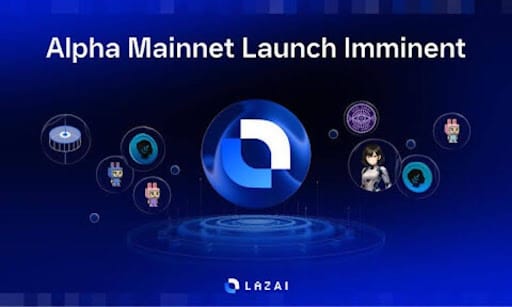The Evolution of Crypto: Overcoming Traditional Finance
When talking about the crypto industry, most people will say that it is still relatively young. After all, it is only approaching its 12th birthday, which will come on January 3rd, 2021.
Despite this, however, the crypto sector has seen a massive amount of progress. Of course, not all of it happened equally over the past 12 years. The majority of enormous development jumps took place in the last four years, while the period before that was marked with much scarcer, although still significant, evolutionary leaps.
Without going through the entire list of such evolutionary jumps, let's just focus on the most recent one, which happened in 2020.
We are, of course, talking about the explosion of the DeFi sector, which marked 2020 as the newest trend, and also one with immense potential so far.
DeFi, or decentralized finance, is not unlike ICOs or IEOs which dominated over the past several years. In essence, it brought numerous new projects, each of which aims to solve some problems.
Crypto Evolution and How it Affects Traditional Finance
One thing that makes it stand out from the failed trends, however, is that Defi is showing much better results. Its projects provide specific services, unlike giving empty promises and vaguely trying to realise them.
DeFi is bringing the same services offered by the traditional banking sector, only it does it in a decentralized way, allowing the community to take care of itself, in the true spirit of crypto.
DeFi has existed for years now, but due to past trends, we largely ignored it. Some argue that it simply emerged too early, as the crypto industry and its participants were not yet ready to understand and use its potential.
This situation has changed now, as the cryptocurrency sector started being taken a lot more seriously by the traditional finance industry. We have seen this happen in numerous cases. Countries' central banks are racing to establish their own central bank digital currencies (CBDCs), which is a trend launched by China.
While China is still unfriendly towards "traditional" crypto, it recognized the potential of blockchain technology, and it was the first nation to announce a CBDC.
Even PayPal, which was well-known for wanting nothing to do with crypto, recently added support for a handful of coins for US users, while the rest of the world can expect access to the same benefits in months to come.
Meanwhile, around the world, the authorities are working on regulating crypto exchanges, which are, in turn, seeking to achieve regulatory compliance.
The question remains, however, whether DeFi can become more prominent than traditional finance? Can it become the new main branch of the crypto industry?
The Growth of DeFi
So far, as mentioned, DeFi has shown tremendous growth. In only a few months in 2020, its TVL (Total Value Locked) skyrocketed from a few million to nearly $14 billion. Decentralized exchanges — particularly Uniswap, the largest DeFi project at the time of writing — have seen more activity than ever.
In the past, DEXes saw a low number of users, which is why they had less liquidity. Meanwhile, the low liquidity prevented new users from coming, and the entire issue kept going in circles.
Now, Uniswap stands as the largest DEX, as well as the largest DeFi project, with nearly $3 billion in TVL. But, it is definitely not the only one that is receiving attention. As more people are entering DeFi, they are also looking for new emerging platforms and projects, aiming to take advantage of 'discovering' new stars of the sector.
One example is Polkadex, a fully decentralized crypto exchange platform. Polkadex has started attracting attention for several reasons, such as reducing the complexity of the blockchain with its design.
The project did it in a relatively simple, although revolutionary way — by keeping only those things that needed public verifiability on-chain. All other information, such as market data aggregation, storage, and retrieval of trade history, technical analysis indicators, and more, are kept off-chain, thus reducing the weight of transactions.
Polkadex also solved the liquidity problem that most other DEXes are suffering from by having on-chain market-making bots within the trading engine. In other words, the project was able to bring solutions to the burning questions which troubled DEXes for years.
Another one, for instance, is the built-in AMM ( Automated Market Making) pool to support the orderbook. Incoming orders are matched not only against the orderbook but also an AMM Pool similar to Uniswap. There is a unique off-chain cloud architecture support, to allow market-making bots to connect to the blockchain directly without any hassles, via widely used protocols like XCTT and XChange, and get rewarded for the liquidity they bring in.
It does not stop there. Polkadex also claims to have found a solution to the longstanding problem of front running in decentralized exchanges by introducing feeless transactions and a brilliant solution to prevent nodes from abusing the network by denial of service attacks.
To top it all, they also have an intelligent network that is possible to be made fully compliant with KYC and AML regulations. This feature allows Polkadex to be the first DEX capable of allowing institutional money to change hands without the fear of stepping over the grey area of money laundering.
Polkadot aims to become a parachain in Polkadot network and bridge liquidity from the trustless cross-chain asset transfer protocols. This mechanism will allow them to transfer native blockchain assets without gaining control of the user’s private keys.
Where is Crypto Going from Here?
The future of the crypto industry still remains rather unknown. It is impossible to predict which new trends might emerge, and when, as well as whether they might stick around or simply pass by.
When it comes to DeFi, it certainly has the potential to go big, as well as to remain as a leading branch of the crypto sector. It brings decentralized banking services, and it allows people to make money outside of pure trading, simply through HODLing and locking away their tokens, lending them, and alike.
In other words, the crypto world is now more than merely trying to make money — it is also about using it, whether for dApps, purchases, smart contracts, new project creation, or otherwise. Crypto adoption is speeding up, and thanks to COVID-19, the potential of the crypto industry is finally becoming more and more visible, even to those who used to deny it in the past.
Conclusion
The crypto industry's development has been rapid over the past few years, and it continues to grow faster and faster. The fact that the focus is once again shifting, this time going from prices to decentralized products, is an indication that the crypto industry and its community are maturing in the right direction.
While it remains impossible to predict which way will the industry eventually end up going, for now, at least, it remains true to its views and beliefs, and it continues down the path towards achieving its full potential.




